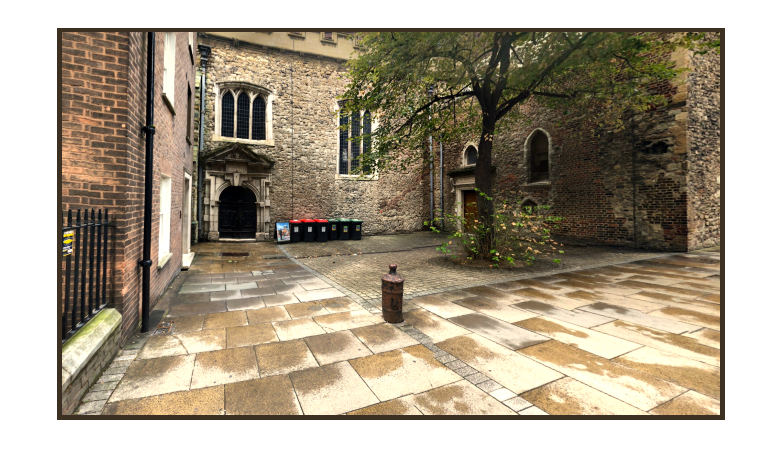
I’ve found talks about bollards advertised online, I’ve found blogs devoted to them, and Pinterest pages full of images of them. So, as I’m never one to fight shy of jumping on a bandwagon, here is my personal selection of the cream of London bollards.
I’ll start near one of my favourite places, Wilton’s Music Hall. I’ve already posted a brief description of its fight for survival here. Wilton’s is on Wellclose Square in a deprived area just north of the site of London Docks – long since filled in. It is, unsurprisingly, listed. What is surprising is that a line of bollards about 100 yards away and theatre-related is also listed. These are perhaps the most extraordinary bollard survivors in London.
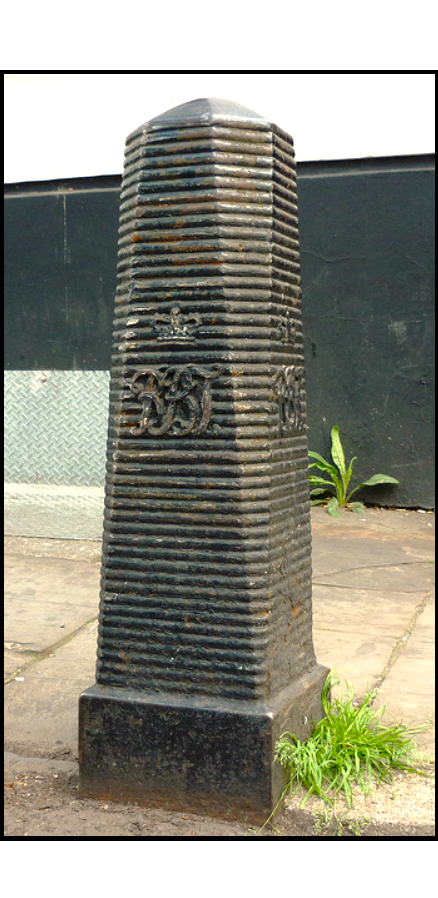
Sited in Ensign Street, they mark the frontage of the Royal Brunswick Theatre, explaining the initials ‘RBT’ on each. This replaced the Royalty Theatre of 1787, which was burnt down in 1826. The new theatre opened in February 1828 and promptly collapsed just 3 days later, on the morning of Thursday 28th February. It took the Star pub with it, and around 10 people were killed. The theatre was never rebuilt, so these bollards marking the frontage of a building open for just 3 days have somehow managed to survive for 192 years.
Incidentally, a marvellous website to help identify and learn about existing and lost theatres in the UK, including the Royal Brunswick, is ArthurLloyd, named in tribute to a music hall star who, by coincidence, appeared at Wilton’s Music Hall several times
Below, we have the site of Gerald Road Police Station in Belgravia, closed in 1993 and marked by both a commemorative plaque and a bizarre police-themed take on the traditional bollard. It was added after the police station closed, when it was converted to residential use.
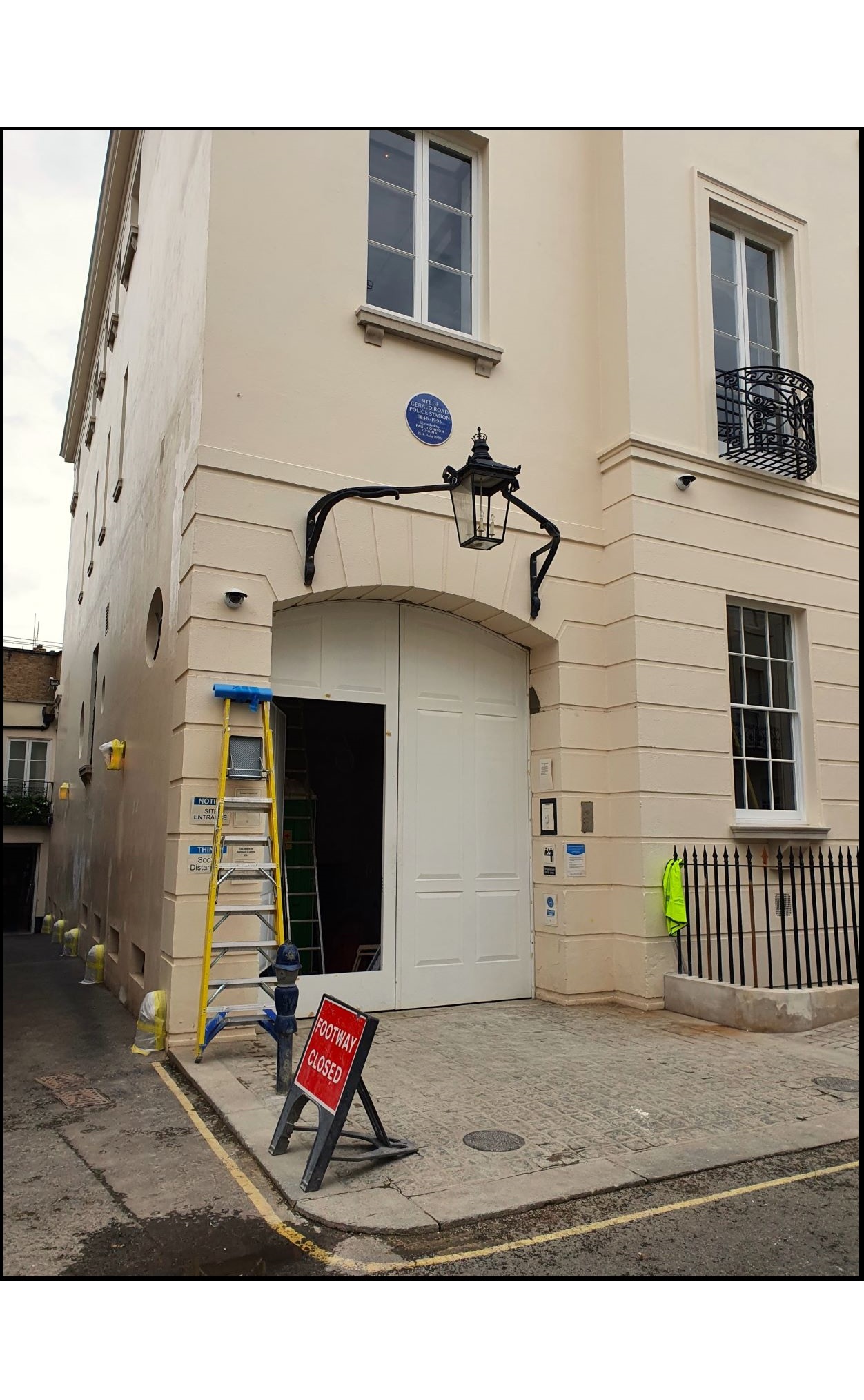
←The bollard is between the ladder on the ‘footpath closed’ sign.
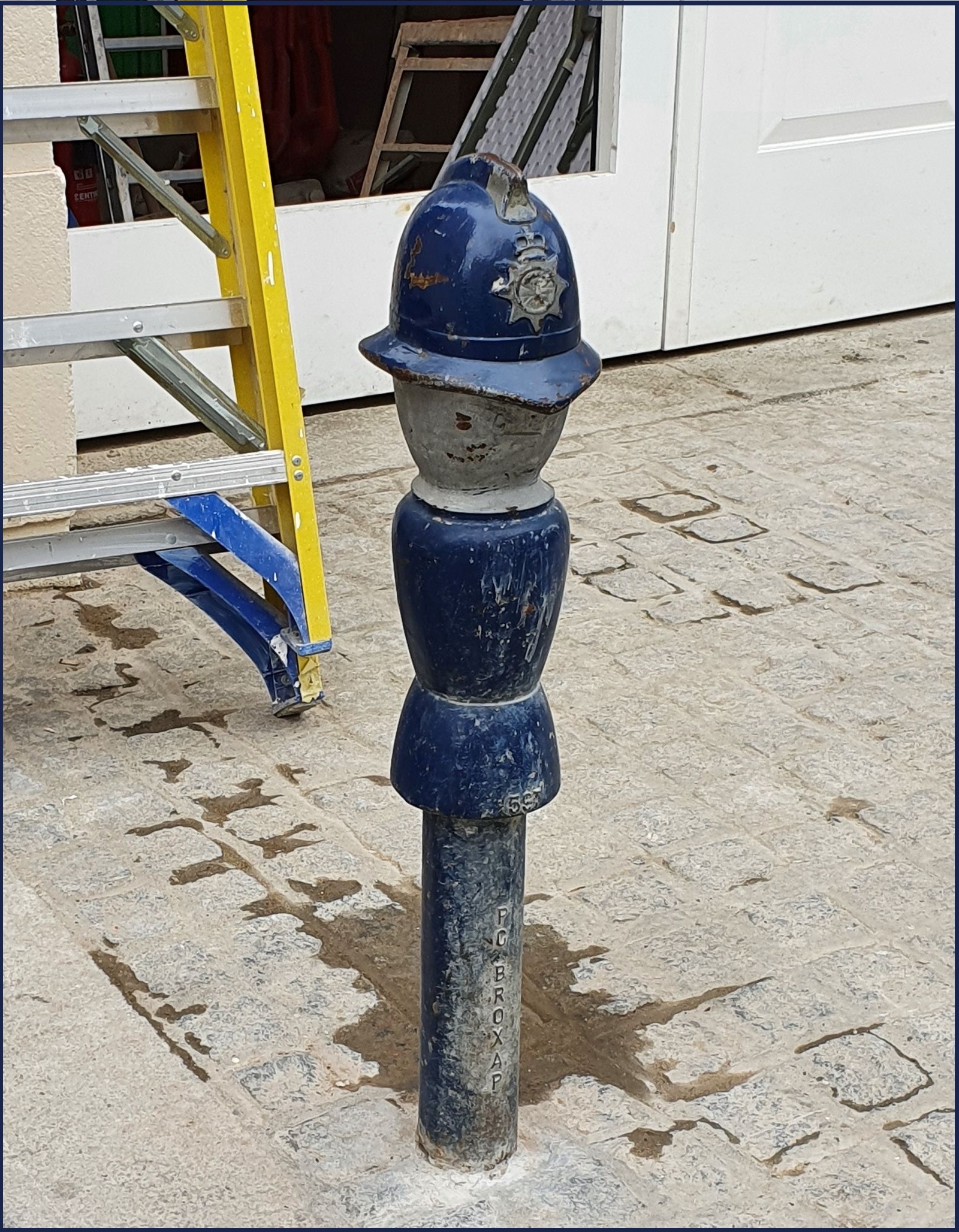
→ A close up of PC Broxap, named after the company that produced him, on duty 24/7.
As a bonus for blue plaque hunters, a former home of Sir Noël Coward is at the other end of this short but exclusive and impeccably maintained street on the Grosvenor Estate. There’s no indication that Sir Noël ever spent a night in the cells, but rumour has it that Ronnie Biggs, the Great Train Robber, did.
Next on the list is an impressive street view, with a mighty impressive set of bollards. This is the junction of Waterloo Place and Pall Mall. The two nearest the camera – and two further examples partly hidden by the statue of Florence Nightingale – bear the insignia of King William IV, aka ‘Sailor Bill’, who reigned for only 7 years (1830-37) and whose death heralded the Victorian era.
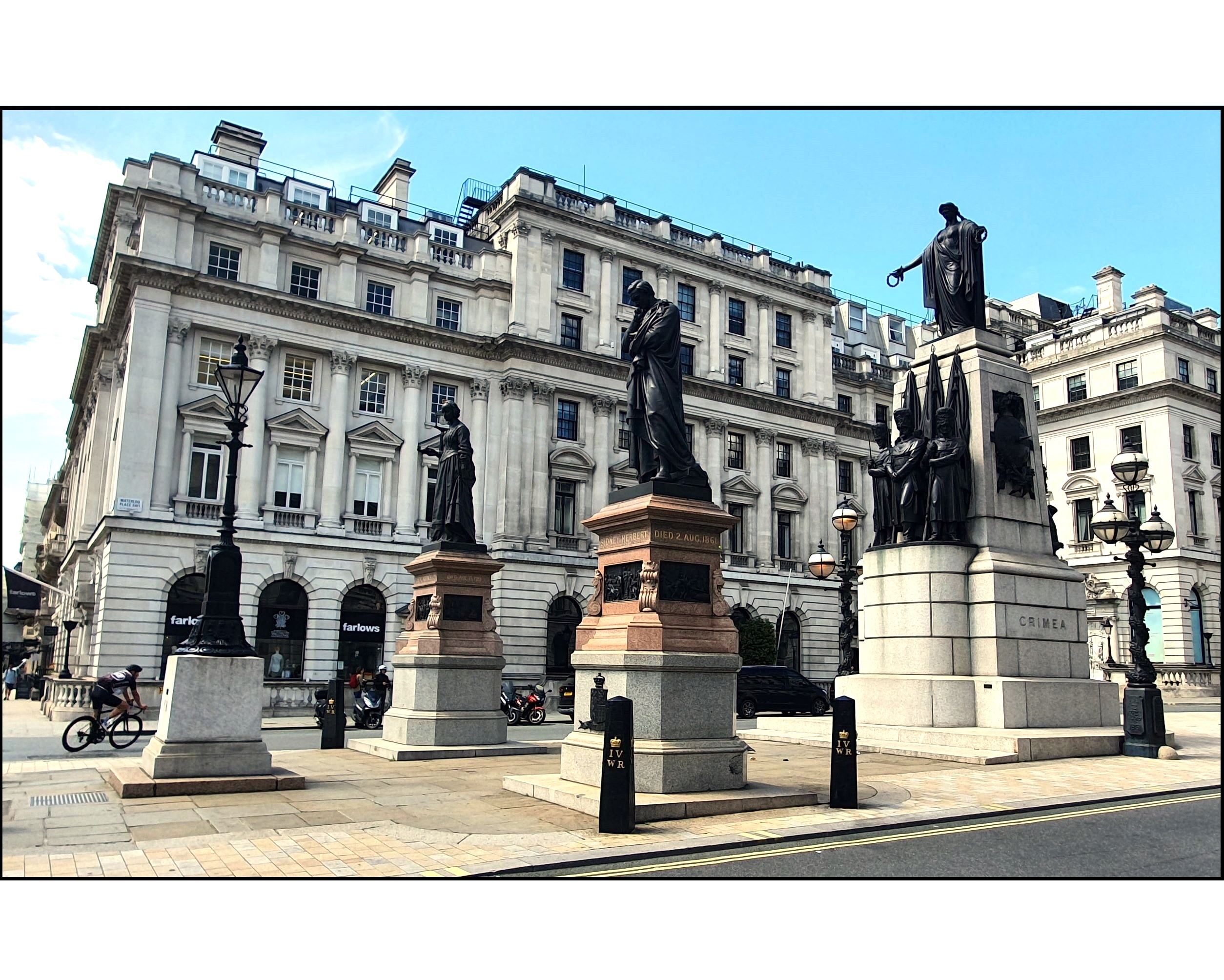
←The bollards and contemporary single lantern-style street lamp in the left of the picture pre-date all three statues and represent another extraordinary survival, having escaped the Victorian building programmes that changed the face of the West End
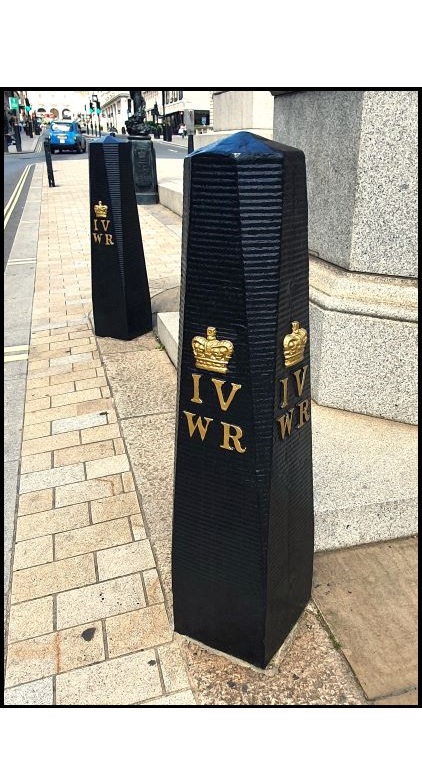
→This close up reveals that the regnal number ‘IV’ is , unusually, placed above the royal cypher, ‘WR’ (‘William Rex’)
Waterloo Place was extended over the site of Carlton House (demolished 1826) and although this part of Waterloo Place was already laid out, the bollards presumably date from those works. Note that you can still see part of Carlton House – its columns were recycled for use on the frontage of the National Gallery.
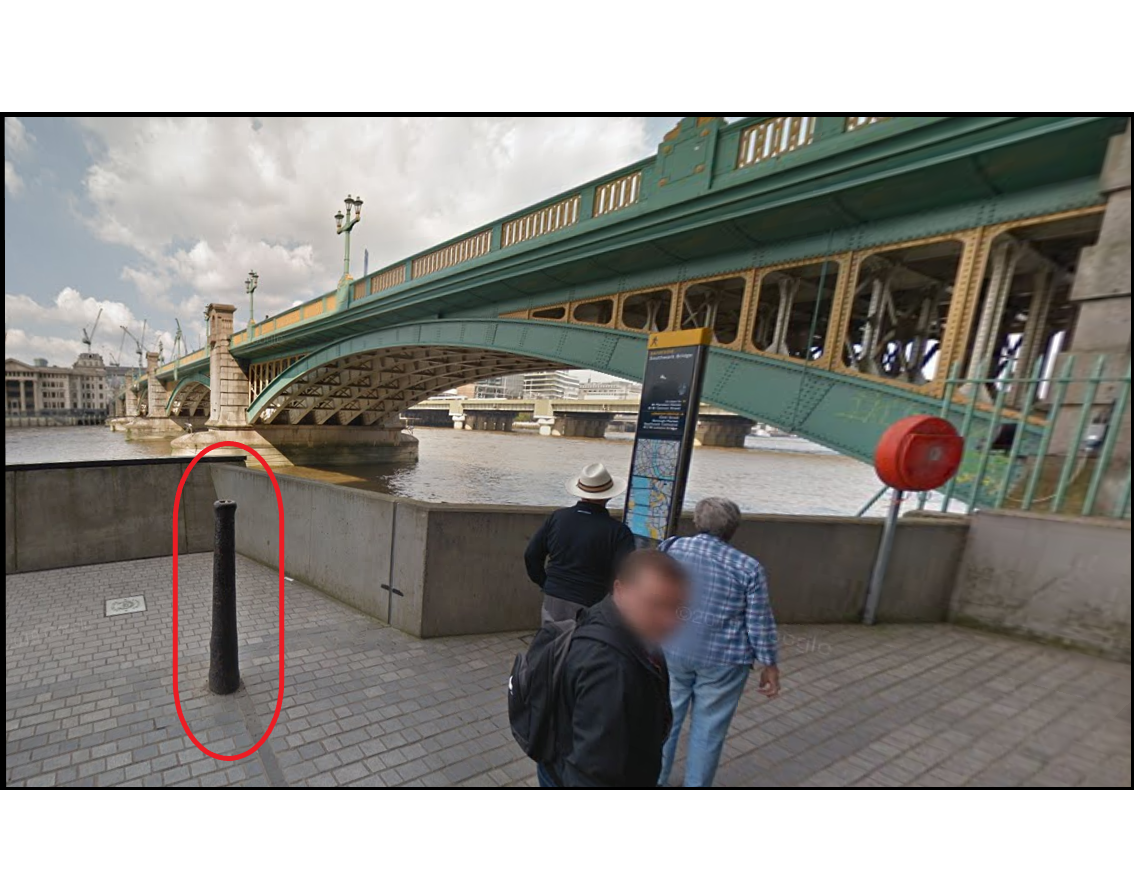
The attractive Southwark Bridge has a cannon bollard standing sentinel at its southern end (circled). Sadly, Cambridge University research seems to have exposed as myth the belief that this was from a French ship captured at the Battle of Trafalgar in 1805.
It does look to be a genuine cannon, but its origins are now considered unclear. Through the arch of Southwark Bridge appears the appropriately if coincidentally named Cannon Street Railway Bridge. The origin of that reference to cannon lies in a corruption of “Candlewick Street”, as the area of the City of London just north of the river at this point was the centre of the tallow candle-making trade. Given it was also the centre of the skinners trade – both guilds still have their livery halls in the area – that must have made for one malodorous neighbourhood. Returning to the matter in hand, the pleasant and shady courtyard at the back of St Helen’s Bishopsgate (featured photograph), contains a cannon bollard taking centre stage with the church as backdrop, and this one at least is widely believed to be French in origin.
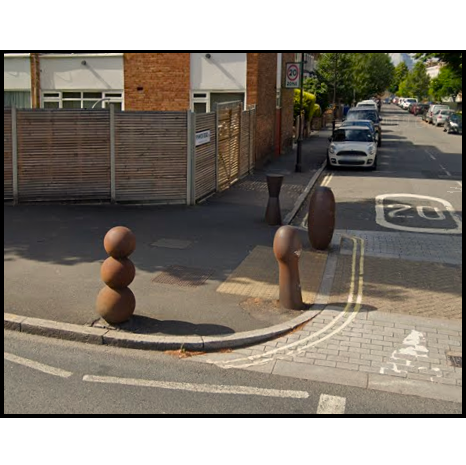
I’m not entirely sure, living in East London myself, whether the junction of Fenwick Road and East Dulwich Road in South London shown here counts as Dulwich or Peckham, but the Antony Gormley-designed bollards certainly count as eccentric and in one case (‘Antony Gormley cast iron bollard No. 2’) arguably obscene – but then that must be an occupational hazard with bollard design.
If you fancy having one or two of them yourself, they are commercially available. I haven’t dared inquire as to price.
The next photograph keeps us in the nether regions of South London, and judging by the café society visible here, the 100 metres of East Dulwich Road between this location and the Antony Gormley bollards make the Zandra Rhodes-designed swirly purple things in the foreground very firmly Dulwich residents.
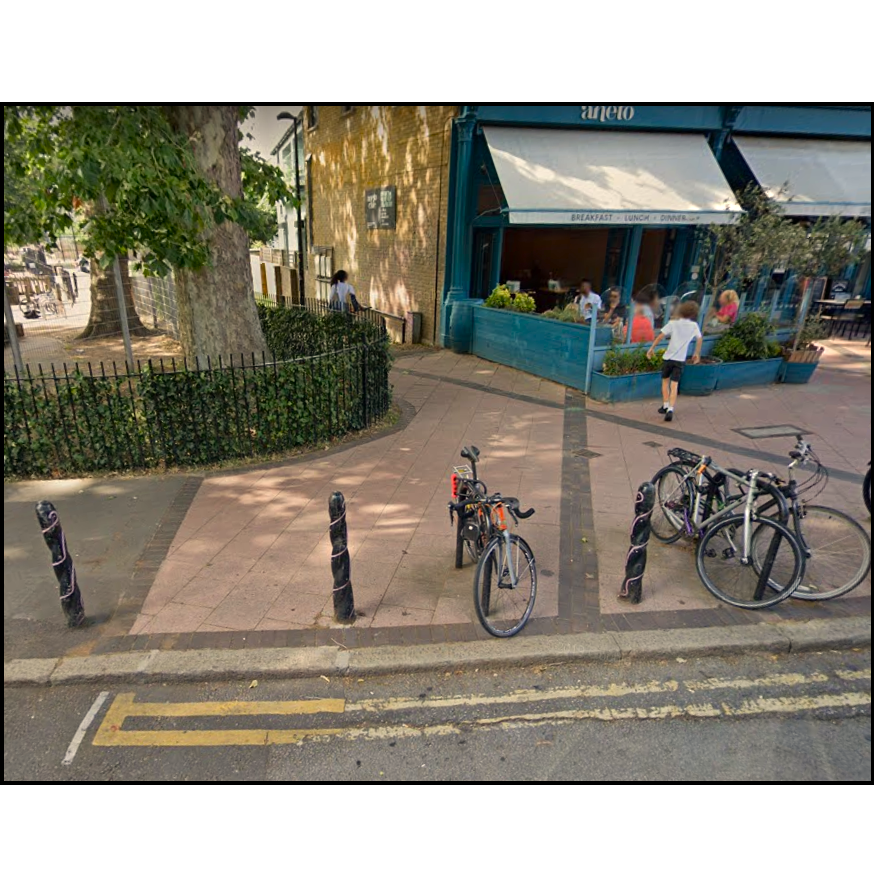
I have yet to discover why this area of London is a hotspot for designer bollards – if anyone knows, please tell me.
Next, and included here as it serves the true bollard purpose of protecting an area from vehicular traffic despite primarily being a piece of art, is a bronze sculpture just off the King’s Road in Chelsea. The sculpture depicts a pupil of the Royal Military Asylum for the Children of Soldiers of the Regular Army playing leapfrog over a bollard, seemingly in an attempt to impress a nearby girl pupil who is perched on a stone slab. Officially entitled‘My Children’ (2002), but more commonly called ‘Two Pupils’, this is a collaborative work; the children themselves are by Allister Bowtell (1940-2006). The slab, by Richard Kindersley, has a text recounting the history of the Asylum. The bollard, labelled ‘Hans Town’ – the name of the neighbourhood – and with a date of 1819, is a modern casting of an original. The asylum, known now as the Duke of York’s Royal Military School, opened in 1803, and was a combined orphanage and boarding school – most children were orphans; others had fathers serving overseas in the army. The girls moved to Southampton in the 1820s and the boys, who were given military training, relocated to Dover in 1909.
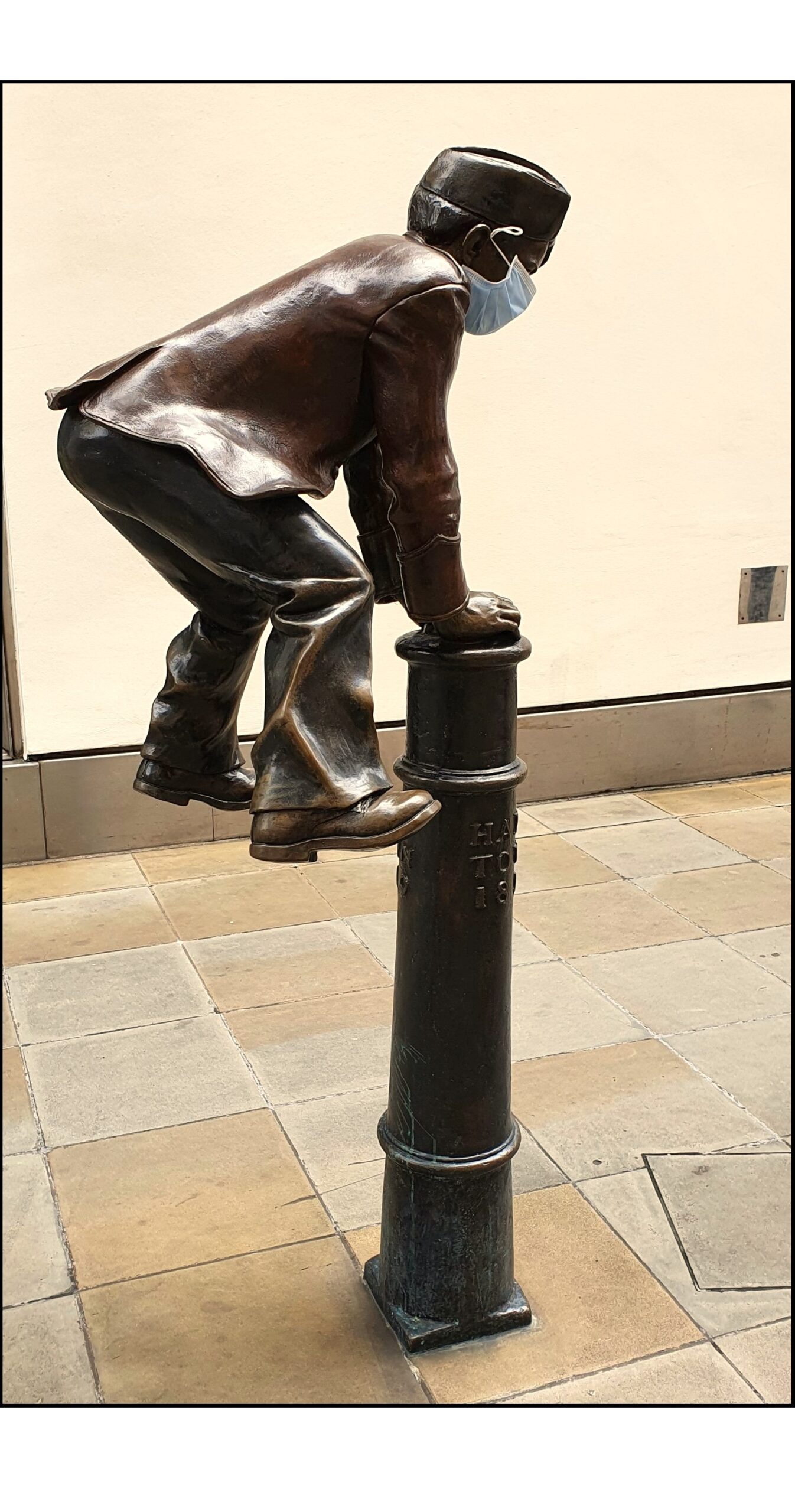
In these Covid-19 times, both the boy …
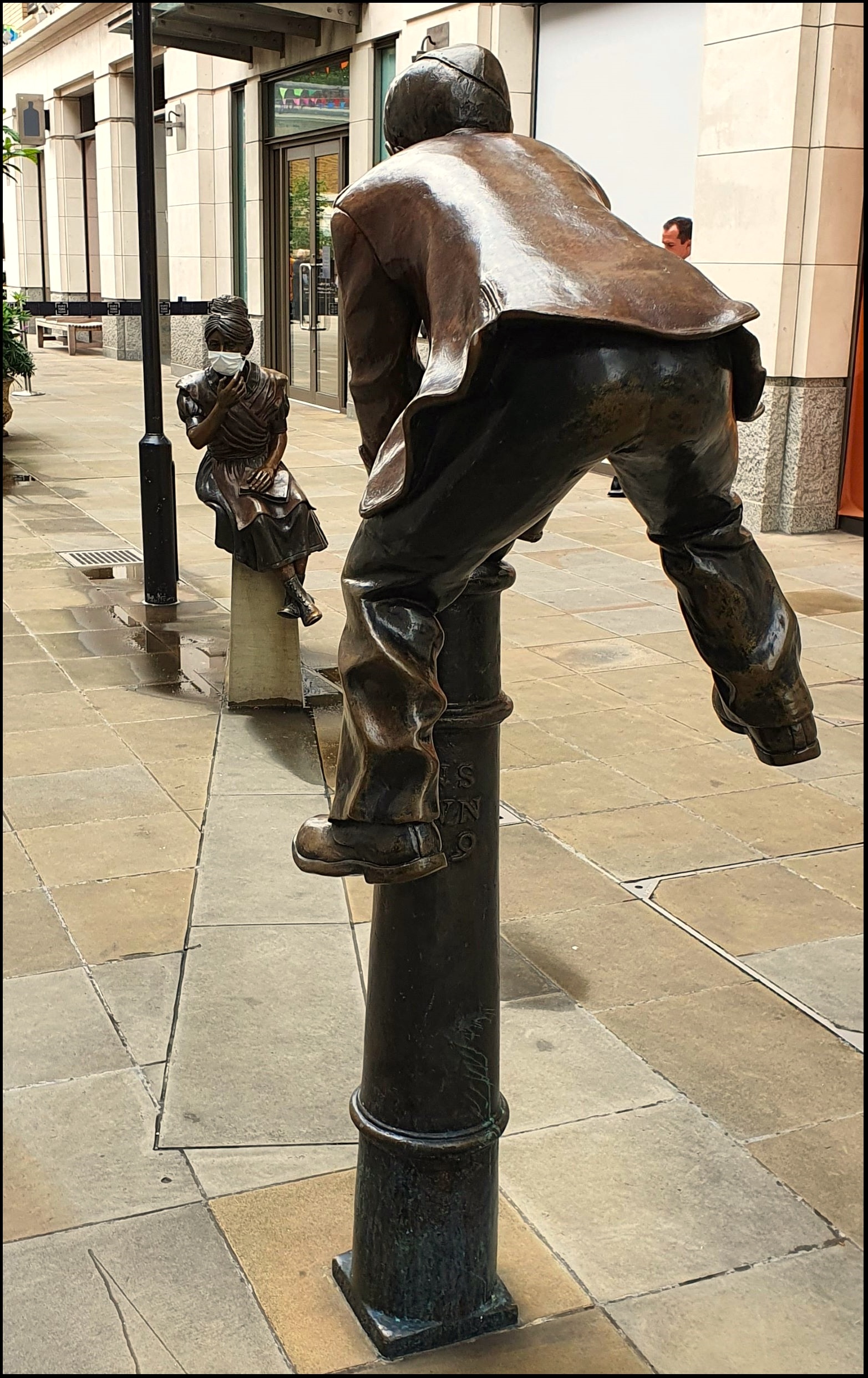
… and the girl are suitably attired
Meanwhile in Putney, the council needs to ask itself whether all its bollards are really necessary. Members of the London Rowing Club seem to have painted three pleasant and (in my opinion) faintly Indian-inspired bollards on Putney Embankment in the club colours, so must be pretty hacked off with the addition of a standard modern black number that doesn’t seem to achieve anything except damage the streetscape.
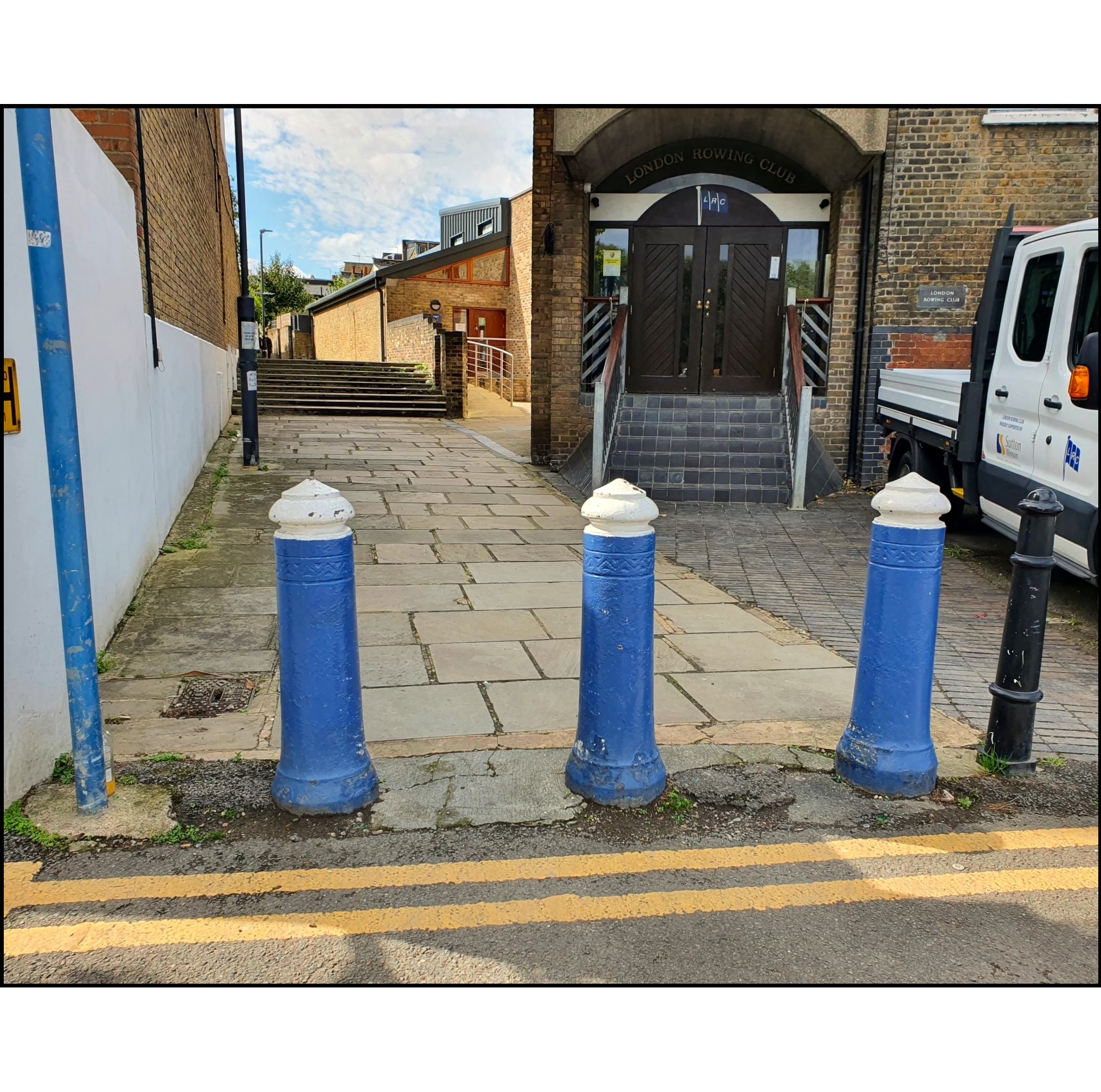
←The positioning of the modern carbuncle to the right is particularly annoying given that the blue and white bollards, dating from c.1887, are listed.
For further reading, the Londonist website has a humorous family tree of London bollards here that might turn you into a bollard spotter, and for true fanatics here’s a blog dedicated to them.
Nearest Stations:
Credits:
Comments are closed.
This post was reformatted 5th September 2020 to do away with the – rather unsuccessful – ‘slide show’ at the top of the post showing all the photographs. Instead, the photographs are now included in the body of the text.